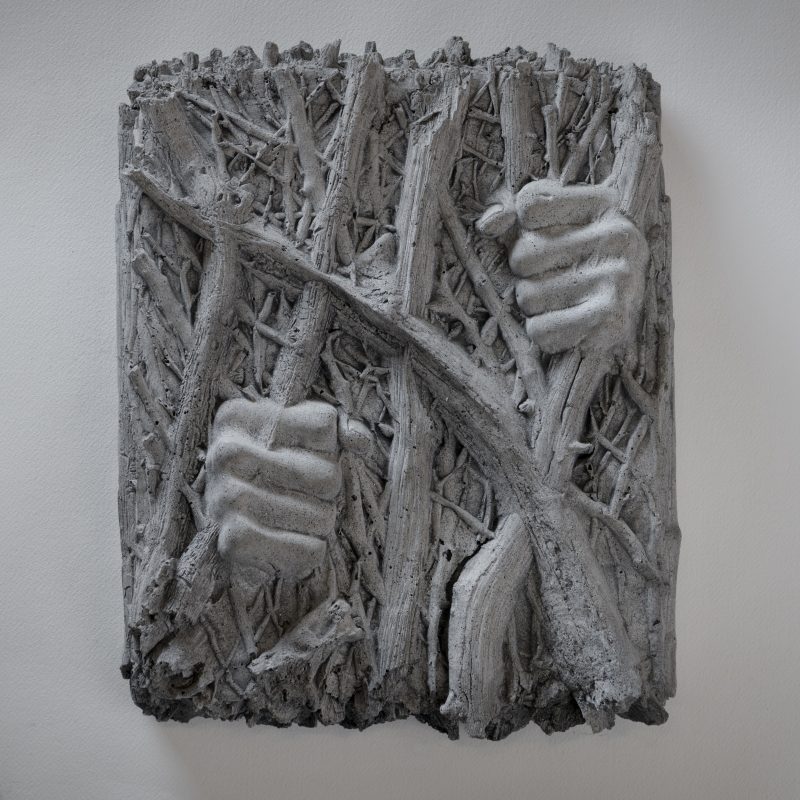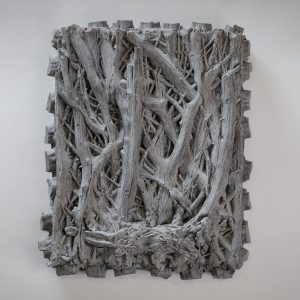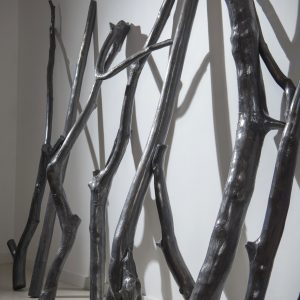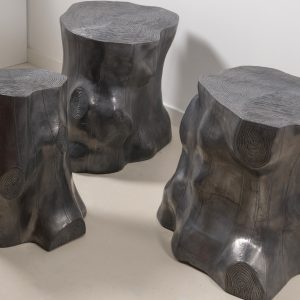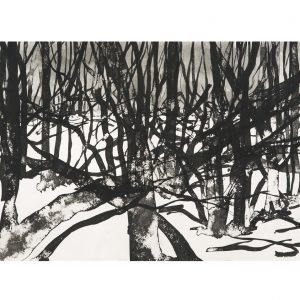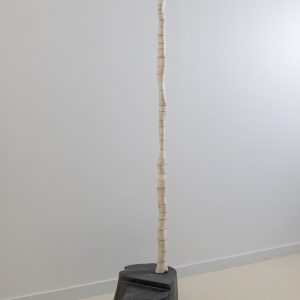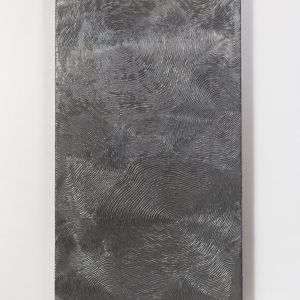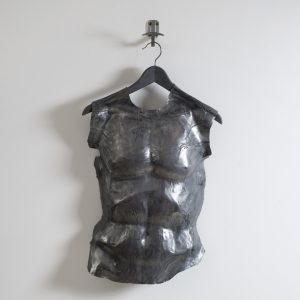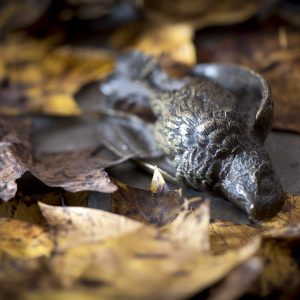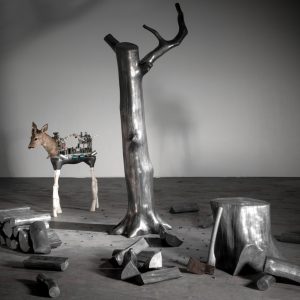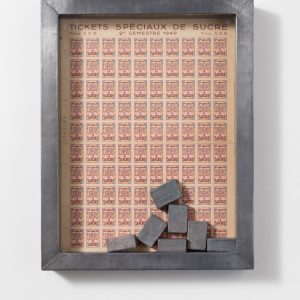David Décamp
David Décamp’s eye was developed in the forest, where he was raised and worked as a lumberjack. A self-taught artist, nature is at the center of the work he has been building since the late 1990s. His artistic practice draws from his personal experience. By exorcising it, he gives it a universal dimension. His sculptures, drawings and installations express with violence and poetry the poisoned and sometimes destructive relationship of Man to his environment. Close to art brut and nourished by a kind of surrealist black humor, the materials he uses often have an autobiographical meaning: wood, lead, bones as in the work of Joseph Beuys.
«The nostalgia for a planet that would still retain something of the wild, or even a planet that would simply remain a habitable environment, for humans, animal or plant species, is at the foundation of David Décamp’s work. (…) His childhood spent in the middle of the forests of the Jura, to which he returns constantly, his knowledge of trees, of which he made his first profession, his fascination for bark and leaves, his attention to animals: art has only translated into forms, objects, and installations, what was for him a landscape as present and constitutive as it was threatened. This is what makes his works and all the lived things that surround them do not belong to the late good ecological conscience which is that of our societies, at the same time worried about the climatic disturbances and always as greedy in goods and energy. (..)” It is as if I wanted to pierce the head of those who will look at my work: with a car. “There is the idea of a way of the cross, without it being the subject. »- François-René Martin (Professeur d’histoire de l’art à l’École nationale supérieure des Beaux-Arts de Paris), “Terminarès”
To discover the full text : Terminarès, François-René Martin

